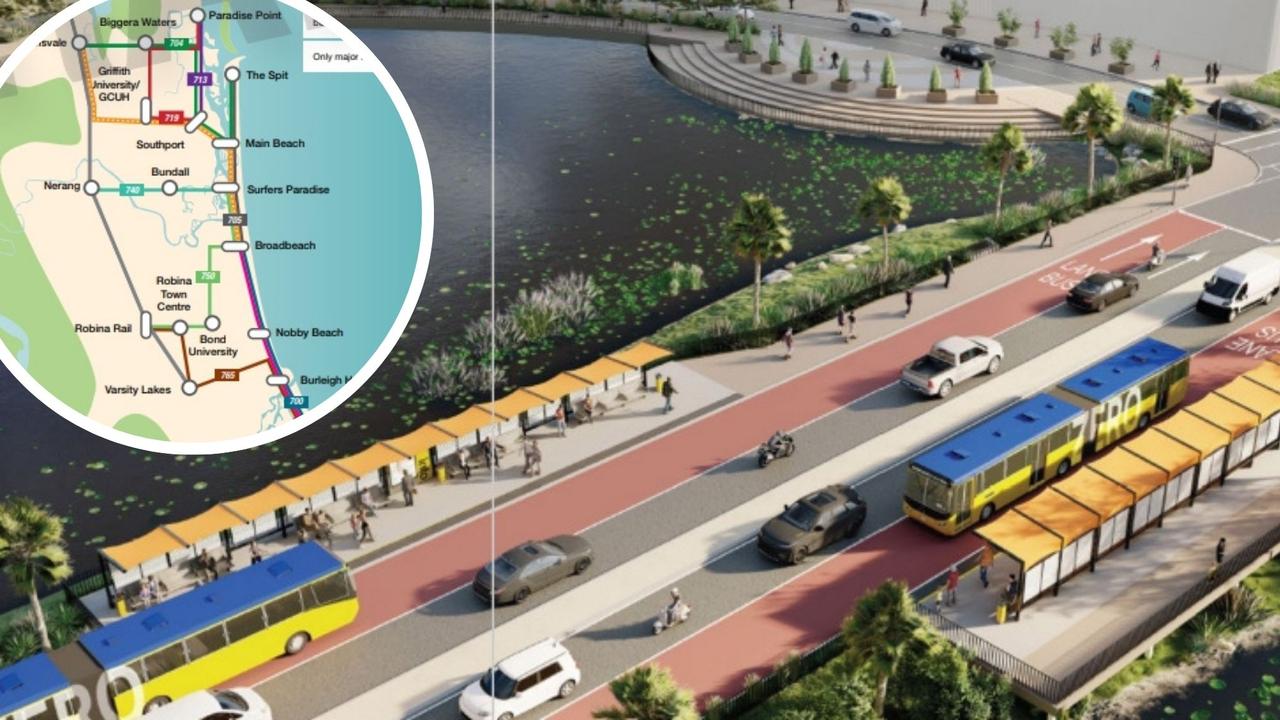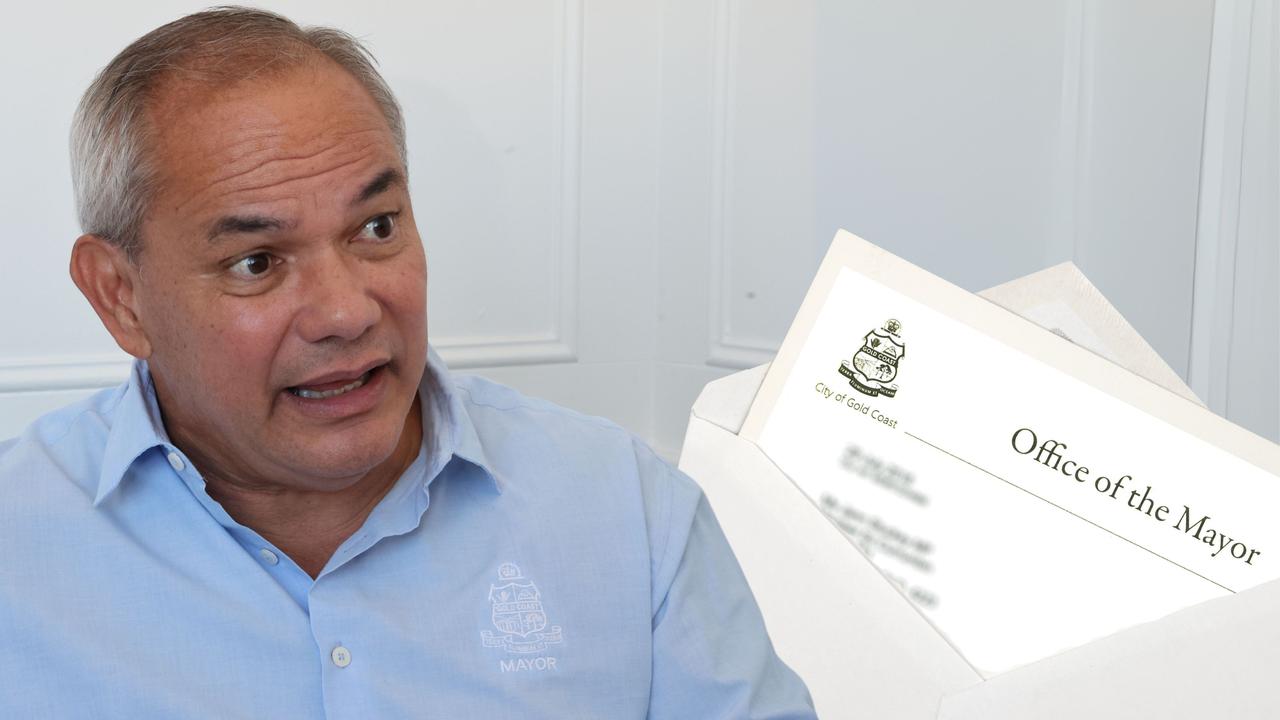Gold Coast light rail: The ‘people pods’ alternative to trams which failed to get support
A Gold Coast leader unconvinced by the light rail unveiled plans for a $100m alternative system which would have transformed the city dramatically.
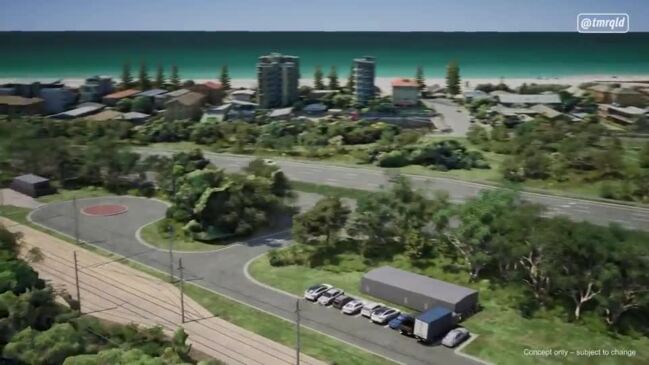
Transport
Don't miss out on the headlines from Transport. Followed categories will be added to My News.
The extension of the Gold Coast light rail took another step forward this week as the first tracks were laid for Stage 3.
The first 14km worth of tracks will be laid by Christmas, with the rest to come in the first half of the year before the trams roll out.
This step forward comes 20 years after perhaps the most memorable alternative public transport option was pitched 0 the “people pods”.
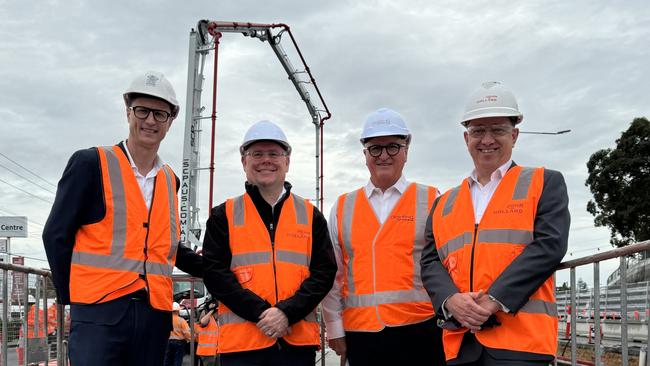
In 2004 the light rail had been in the planning stages for more than seven years and was championed by Mayor Gary Baildon.
But Mr Baildon lost power in March that year to Olympian and the now late Ron Clarke who was not convinced that trams or trains would be the right fit for rapid transit on the Gold Coast.
Mr Clarke’s vision for the city was to take the Gold Coast into the 21st century and his idea to replace trams was equally futuristic.
Space-age people pods instead were chosen as his way of solving the city’s traffic woes.
To mark his 100th day in office, Mr Clarke unveiled his plans for the elevated people-mover that was developed by Sydney company Bishop Austrans Ltd and trialled in the NSW capital.
Ironically, this date fell exactly 10 years before the Gold Coast light rail’s trams took their first passengers.
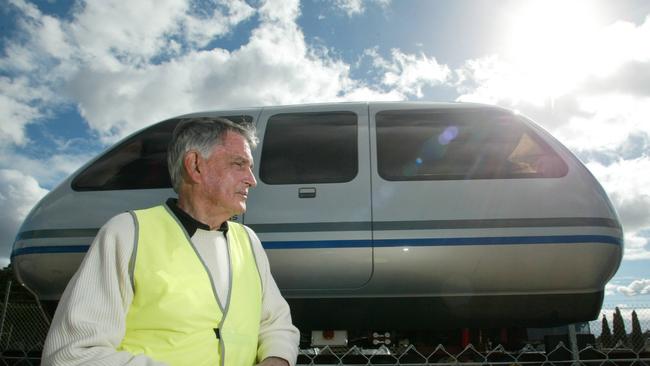
Mr Clarke told the Bulletin on July 20, 2004 that he had already fielded interest from two potential investors and claimed the system would cost ratepayers nothing.
He wanted to initially build an overhead track from Gold Coast Hospital at Southport to Broadbeach, a trip he predicted would take just 12 minutes and cost $2.
Under plans released to the public, the people pods were driverless and could carry 18 people at a time — nine sitting, and nine standing.
They could arrive at a station at 15-second intervals and could transport 10,000 people every hour.
It was estimated the entire system would cost about $100m to install or around one-third of the 2004-era expected cost of light rail.
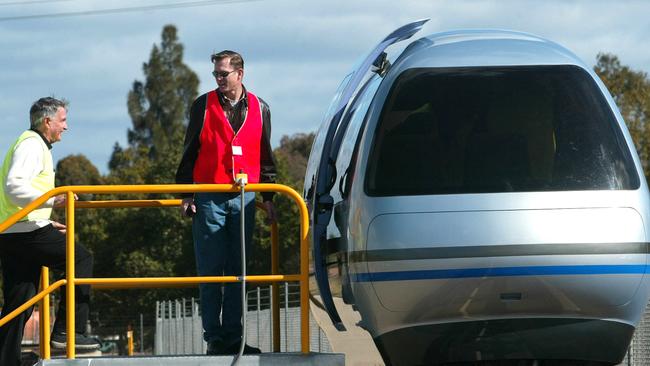
“I have spoken to two people who are definitely interested in financing it,” Mr Clarke said at the time.
“We need to make sure it will work properly. It’s in no other country, they’ve only got an experimental one in Sydney but they’re selling them all over the world.
“We’re in the queue. We have to go down and have a look and make sure we can find a route for them.”
A month later the Bulletin made the trip to Sydney with Mr Clarke to view the people pods in action.
Mr Clarke rode the 475m test track, installed in a railyard at Chullora by the system’s creators and he was said to have enjoyed the experience.
The Mayor did four laps of the track, taking his wife Helen, Gold Coast engineer John Howe, and the council’s transport manager Rod Grose along for the ride.

Despite his enthusiasm for the idea, Mr Clarke’s colleagues were not swayed and the proposal was never progressed in any meaningful way.
Eventually light rail was determined as the most viable solution and by 2009 all three levels of governments together put forward the $1.2 billion needed to make the 13km first stage a reality.
It opened to the public on July 20, 2014 and was an immediate success, followed by Stage 2 in December 2017.
Now political leaders are ramping up the battle to get stage 4, which will trave all the way to the border, completed by the 2032 Olympic Games.




